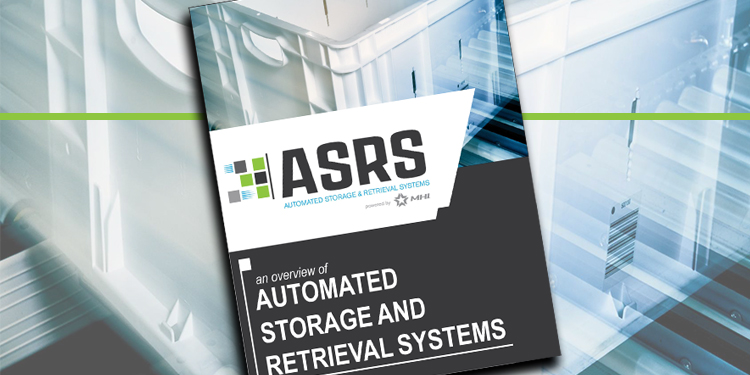New Publication Explores Types, Benefits, And Uses Of Automated Storage And Retrieval Systems

According to a recent report by Markets and Markets, the automated storage and retrieval system (also known as AS/RS or ASRS) market is expected to increase at an 8% compound annual growth rate (CAGR) — from $7.3 billion in 2020 to $10.7 billion by 2025. The report attributes that growth to the exponential increase in e-commerce, driven by the Covid-19 pandemic. By deploying ASRS technologies, which operate on the goods-to-person principle that eliminates picker travel to retrieve items to fill orders, warehouses and distribution centers (DCs) can maximize their available labor’s productivity as many job openings go unfilled.
Yet many organizations are unaware of the range and breadth of ASRS equipment available, their various uses, the industries they are already serving, and the benefits they deliver. To help educate potential users of this technology, the members of the Automated Storage and Retrieval Systems Industry Group of MHI recently published “ASRS: An Overview of Automated Storage and Retrieval Systems.”
The document explains how ASRS solutions combine machinery and controls to handle, store, and retrieve inventory with a high degree of precision, accuracy, and speed. Types include Unit Load, Mini-Load, Vertical Lift Modules (VLMs), Horizontal Carousels, Vertical Carousels, Shuttles, and Cube-Based storage. Depending on item profiles and storage density needs, one or more types of ASRS might be implemented within the same building.
A broad range of industries — such as automotive, food and beverage, electronics, e-commerce, life sciences, pharmaceuticals, plastics, manufacturing, maintenance and repair operations, and more — use ASRS solutions to address a variety of needs. They are often used for:
- Order Picking – Retrieving and presenting required inventory to pickers.
- Storage – Providing dense long-term buffering for small or large items that are slow- to medium-movers.
- Kitting – Serving as a storage area where component parts are grouped together prior to assembly.
- Consolidation – Offering a dynamic area to hold parts and items until all pieces of an order can be merged ready for shipment.
- Assembly – Holding work piece components for later production.
- Production –Storing tooling and component parts for manufacturing processes.
- Replenishment – Holding excess inventory for restocking of ancillary picking systems.
- Security – Providing an enclosed storage environment with software access controls to prevent theft.
- Retail – Storing a large quantity of parts and items at a customer service desk.
The benefits of utilizing an ASRS are multi-fold. They increase throughput capabilities and accuracy levels to 99.99+%; improve ergonomics by delivering items to the operator at a comfortable height while eliminating walking, searching, lifting, bending, and twisting; deliver highly dense storage, saving 85% of otherwise wasted floor space; secure high-value products; and provide real-time inventory control.
Want to learn more? Download the free publication.



